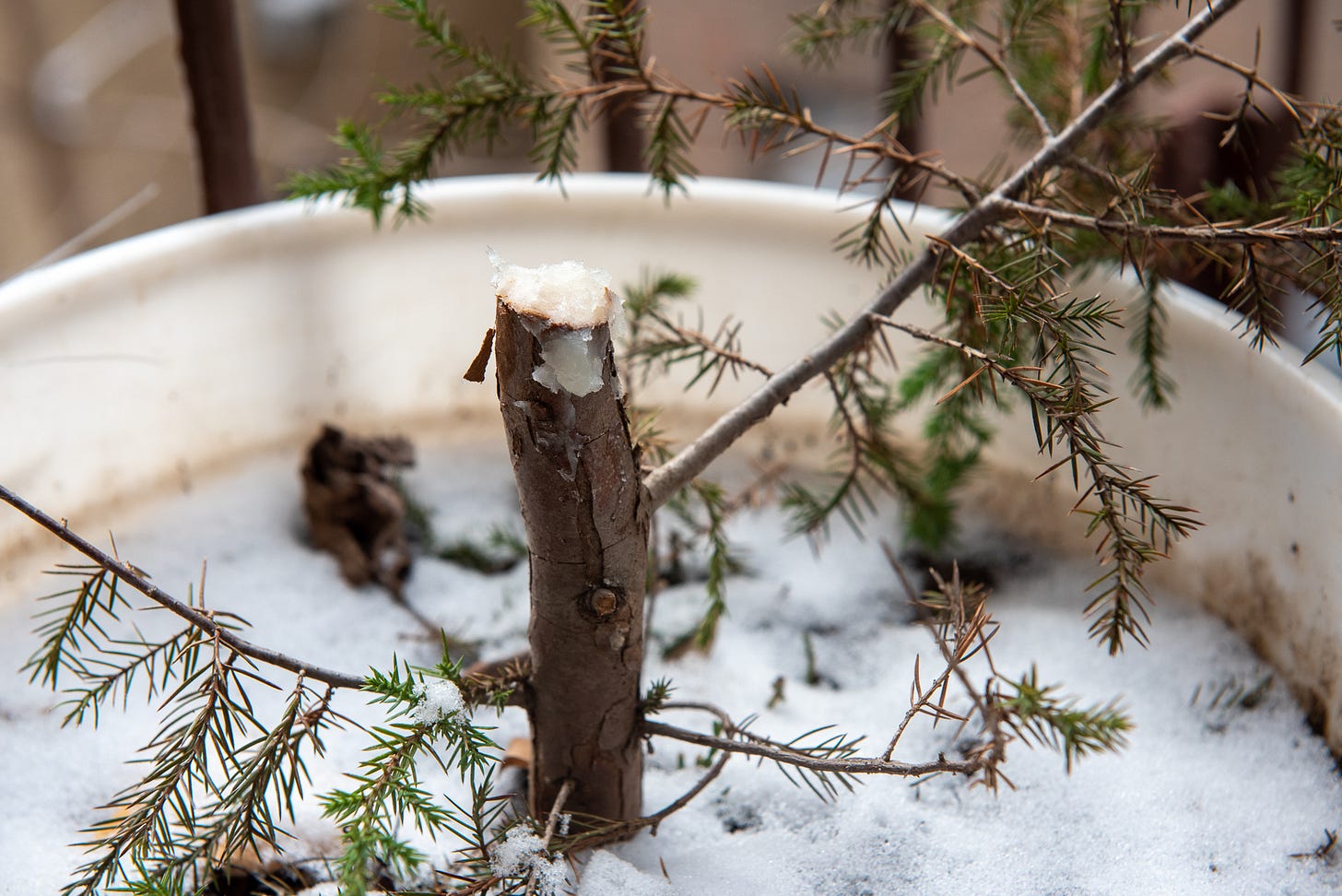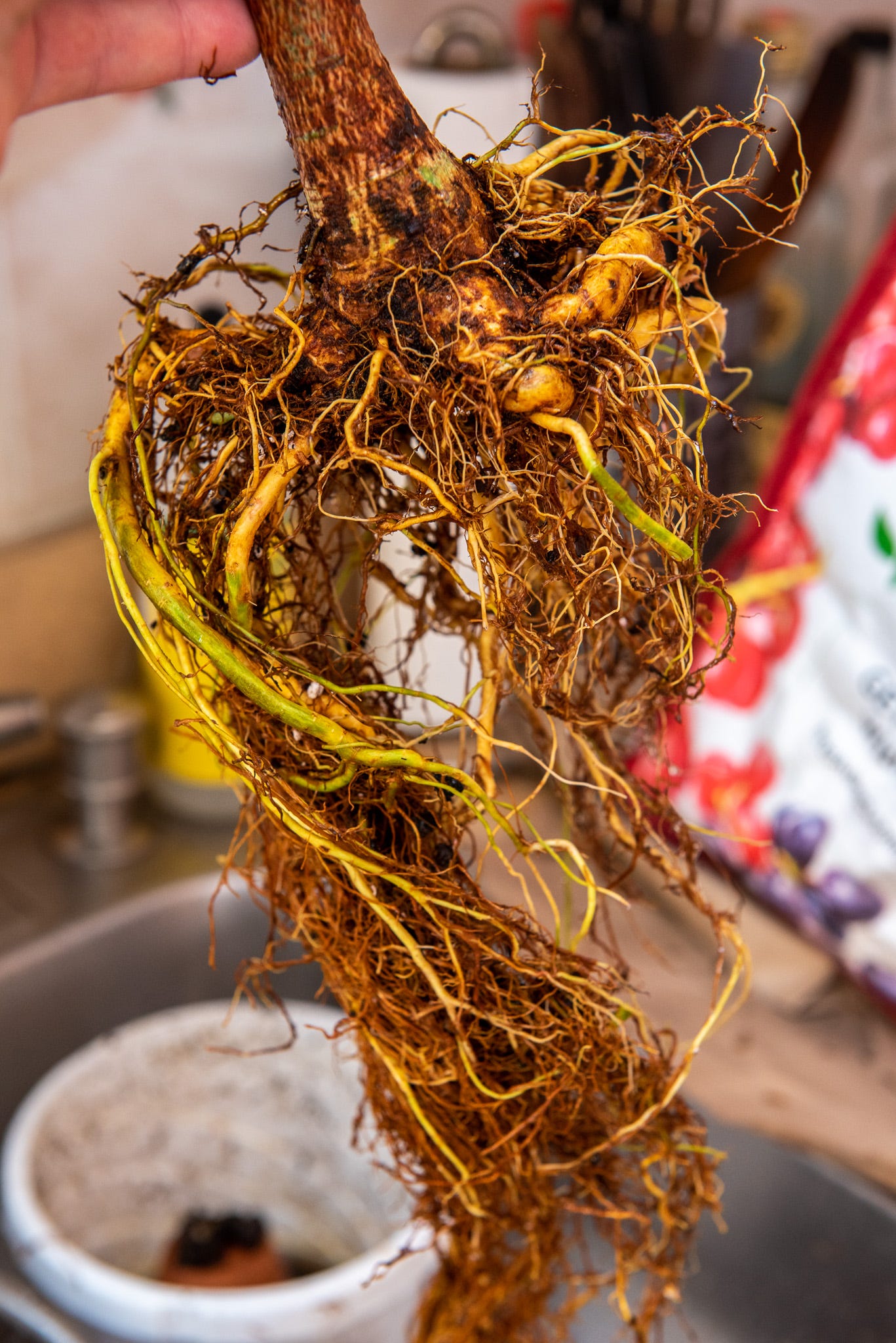When I tell people I do bonsai, they often ask me if it’s cruel to the tree. I understand why. On the surface, the act of dwarfing a tree’s roots to fit into progressively smaller pots sounds like deforming a person’s ribcage to fit into a Victorian corset. Branches contorted with black wire suggest some kind of anodized aluminum shibari.
Bonsai is an immigrant to American shores. As such it must explain its values to the public time and again.
While the practice of bonsai requires humble study of nature and horticulture, the visible product can appear otherworldly: a dream brought into the world by the dreamer, sculpted in bark and foliage. This tension between the natural and supernatural is one of the aspects of bonsai that I find thrilling. But if there was convincing evidence that plants feel pain, I’d wager that bonsai artists would be among the first to put down their shears. I don’t think it’s possible to work with trees through bonsai without learning to respect them—and the ecosystems they come from.
By now we all know that trees exchange resources with each other through fungal networks. There is evidence they communicate through these networks as well. When an animal munches on the leaves of an acacia tree, the tree releases pheromones that other acacias can detect. Those that do release tannins into their foliage that taste bitter to browsing herbivores: an early warning system for a group deterrent.
I’m especially intrigued by Boquila trifoliolata, a vining plant native to South America that mimics the leaves of the tree it’s growing on. Nobody’s sure how the plant does it—plants don’t see—yet it can even replicate the leaves of an artificial plastic plant, which rules out obvious microbial or chemical explanations.
Some academics, and many pop-science hangers-on, consider these findings part of a novel field they call “plant neurobiology.” The headline of that Nautilus article in the previous paragraph is “Plants Can Feel Pain and Might Even See.” With a growing body of evidence, who’s to say plants don’t feel pain like we do?
The answer is most other academics, who point out that behavior isn’t the same as intent, and that while mycelial webs may resemble neural networks, they contain no actual neurons. If plants do feel pain—if they’re conscious or sentient in any way—their minds aren’t anything like ours. There’s no guarantee we could recognize a conscious plant if we met one. Think how alien an octopus seems to you—then consider how much you share with it compared to a being from a whole other taxonomic kingdom.
For me, this is cause for wonder, not disappointment. How boring would trees be if they conformed to our anthropomorphic expectations? I’d rather appreciate that I share a habitat with beings whose inner lives I can’t begin to understand—that may be beyond human understanding. And it just so happens that they produce the air I breathe, and I produce the carbon that allows them to create their own food? On a rock hurtling through space towards infinity? Far out.
The irony of the whole is-bonsai-cruel thing is that trees selected for training are pampered like they go to prep school. They get all their lighting needs met with no risk of competition. They’re reliably watered and festooned with fertilizer and trimmed by someone who’ll consider it a personal failing if the tree is anything less than a perfect vigorous specimen. Under these circumstances, a dramatic trunk chop or root prune may be momentarily stressful, but it’s a cushier—and probably longer-lived—alternative to life in the state of nature. There is a 1,000-year-old ficus at a bonsai museum in Italy. Would that we treated each other with the reverence afforded to bonsai trees.
Tree reading
The long, long relationship between humans and the antediluvian ginkgo tree, excerpted from Jared Farmer’s book, Elderflora: A Modern History of Ancient Trees. [Lapham’s Quarterly]
An old but lovely ode to figs and the trees that produce them! [The New Yorker]






